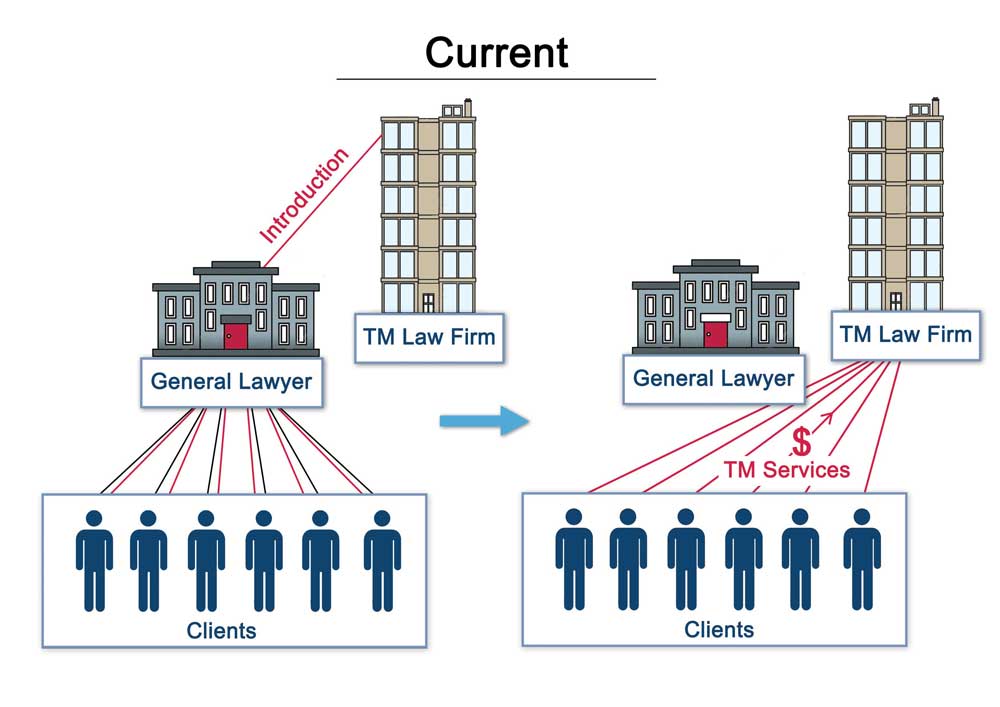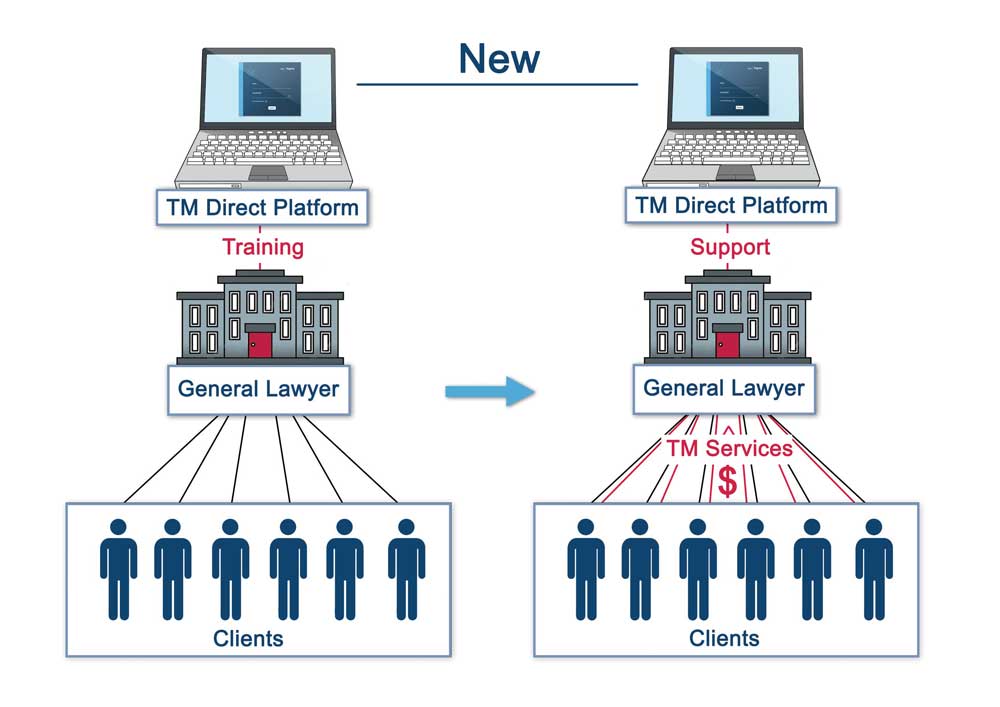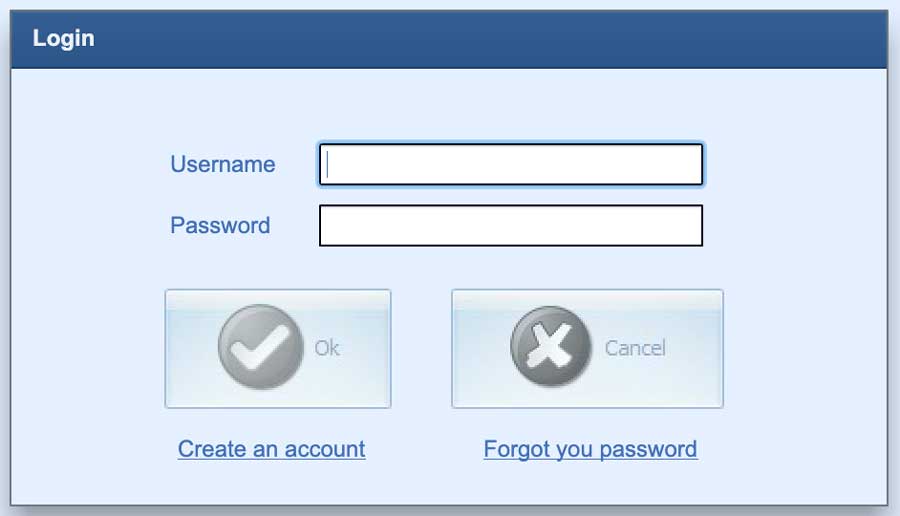

TM Direct
Professional, online trade mark filing platform
Apply
1

Register

Register:
There is no cost to register on TM Direct.
This platform is exclusive to South African attorneys and accountants wishing to extend their service offering to trade marks.
Trade Mark Process


+ 15-20 months

+ 6 months

+ 3 months

+ 4 months
(R1 500 + vat)

+ 9-12 months

R1 000 + vat)
+ 3 months

(R3 450 + vat)

+ 9-12 months

R2 000 + vat)
+ 3 months
+ 15-20 months

(R1000 + vat)
+ 6 months

+ 3 months

(Optional: courier of certificate
R1 500 + vat)
+ 4 months
Introducing TM Direct
Our aim is to enable South African attorneys and accountants to extend their service offering to trade marks. With the support of our trade mark attorneys, you can confidently provide trade mark services to clients using TM Direct.
Our trade mark attorneys will:
- assist you with any queries you may have (without charge);
- file your applications;
- ensure compliance with CIPC requirements and timelines;
- respond to CIPC office actions; and
- arrange publication of accepted trade mark applications.
The client remains yours. We just support your use of the TM Direct online filing platform. You no longer need to risk losing clients by referring them to trade mark law firms.
For further information, contact us or Register as an attorney / accountant.


Search
Word mark:
Class:
Notes & Tips:
- Search for the Word mark in other languages
- Search for your Word in the classes in which you will trade. Also search for similar Words in associated classes
- Descriptive marks (e.g. Joburg Cycles) are not good trade marks
- Do not try register a well-known brand, e.g. ZARA
NOTE: This online search facility finds identical trade marks on the South African trade mark register, but excludes trade marks filed within the last 6 weeks. If a confusingly similar trade mark has previously been filed, or if a similar unregistered trade mark already enjoys a reputation in South Africa, the South African Trade Marks Office may refuse your application.
Alternatively, ask us to conduct a professional trade mark registrability search (cost: R3,600 plus vat).
FAQs and Glossary
What is a trade mark?
A trade mark is a mark which distinguishes the goods and services of one entity from the goods and services of another.
Example: COCA-COLA and PEPSI.
What rights does a trade mark give me?
A trade mark protects your brand, preventing others from using a brand that is confusingly similar to yours in relation to confusingly similar goods and services.
Basically, a trade mark gives you a monopoly to use the trade mark in relation to the goods and services you have registered it for and entitles you to take infringement action against anyone who uses a mark which is the same as or confusingly similar to yours.
What are the requirements for registration?
To be registrable, a trade mark:
- Needs to be distinctive - avoid using common / descriptive terms or words. The more unusual, the better.
- Must not be the same or confusingly similar to an existing trade mark application - a search can assist with this.
Note: the Trade Marks Act sets out other disqualifications but these are rarely cited.
Trade Mark Filing Tips
- Choose a trade mark which is distinctive. Avoid using common words or terms.
- Do not copy someone else's brand.
- Keep it simple and something which your consumers are likely to remember.
- Remove symbols such as ™, ® and ©. If you file a trade mark with any of these symbols, the Trade Marks Office will require an amendment to be lodged which (a) incurs additional expenses; and (b) delays progression of the trade mark.
- Focus on filing the "core" brand. For example, instead of filing XYZ TRADING, XYZ LOGISTICS and XYZ INCORPORATED, just file XYZ in the relevant class(es). Words such as "trading", "logistics" and "incorporated" are common (and subject to a disclaimer) and cannot be monopolized.
Types of trade marks
A trade mark typically covers a word, a logo or a device.
What if you don't have a registered trade mark?
Without a registered trade mark, if you can show a reputation in your trade mark, you can rely on common law trade mark rights. If someone starts using your common law trade mark, you can take action based on passing off (as compared to registered trade mark infringement). Passing off occurs when the infringer leads the public into believing that his goods / services are associated with those of the common law trade mark owner. The difficulty with a passing off action is proving goodwill or a reputation - a common law trade mark owner can usually only prove a reputation in a specific geographical area and in relation to specific goods or services. Enforcing rights this way is very difficult and costly.
A registered trade mark is undeniable proof of your rights; you need not prove a reputation; and enforcing registered trade mark rights is much more cost-effective.
Who may register a trade mark?
Anyone who uses or intends to use a trade mark in South Africa. The applicant may be a natural person, a company or a trust. If a trade mark is filed in the name of a trust, the applicant must be cited as "the trustees for the time being of the … trust".
Note: if a South African resident has generated a reputation in a trade mark, South African Exchange Controls require that the trade mark application be filed in the name of a South African person / company.
How to conduct a trade mark Search
Searches are conducted through the Trade Marks Office's online register. You can conduct your own identical search by visiting the Search section above and conducting searches for specific words in selected classes.
The intention of the search is to find confusingly similar trade marks in similar class(es), as: confusingly similar marks may be used by the trade mark examiner to object to your trade mark application; or the owner of a confusingly similar mark may oppose registration of your trade mark application.
Alternatively, you may instruct us to conduct a registrability search by contacting Taya (taya@snz.co.za), 011 483 3128). Our charge for a trade mark registrability search is R3,600 plus VAT; the search typically takes 2-3 business days and we will send you a report containing the results of the search together with our opinion on the availability of the trade mark.
Note: the search is for South Africa only and a favourable search report does not guarantee registration of the trade mark.
How long does it take to register a trade mark?
Typically, it takes 2 years for a trade mark to progress from filing to registration:
- If the Trade Marks Office objects to the trade mark application, you can expect to receive an office action 9-12 months after filing.
- Office actions must be responded to within 3 months.
- Trade marks are typically accepted within 15-20 months of filing.
- Trade marks must be published within 6 months of acceptance.
- The trade mark is open to opposition for 3 months following publication.
- The registration certificate is typically issued 7 months after publication.
How do I register a trade mark?
-
Filing
To file a trade mark:
- Register / login.
- Complete your profile (to ensure seamless communication and properly completed invoices).
- Enter your Word mark / upload your logo (optionally, also add your reference).
- Enter the applicant's details.
- Select class(es).
- Download and sign the Power of Attorney form.
- Upload the signed Power of Attorney form.
- Pay by credit card.
(Also see the section above headed "Apply")
Trade marks are filed with the South African Trade Marks Office. Typically, within one business day of filing, we will receive the trade mark application number from the Trade Marks Office. The filing receipt and application number will be received by us and emailed to you.
-
Examination
9 - 12 months after filing the trade mark, it will be examined by the Trade Marks Office. Trade marks are examined to determine whether they meet the registration requirements. Based on this examination, an office action will be issued stating whether the trade mark has been accepted subject to conditions or refused. Typically, the Trade Marks Office is willing to accept a trade mark once we have complied with one or more of the following conditions:
- Provide the meaning of the trade mark - e.g. where a trade mark is filed in a foreign language.
- Lodge a power of attorney - for some reason, the Trade Marks Office automatically adds this requirement as a default condition for acceptance. Ignore this if a signed power of attorney was submitted by you at the time of filing.
- Agree to an association - associated trade marks are 'linked' and need to be sold together, should this ever become necessary. Typically, if the same trade mark is filed in more than one class, the classes will need to be associated.
- Agree to a disclaimer - disclaimers are requested on matter which is non-distinctive i.e. descriptive / commonly used words or phrases. For example, a trade mark for COBRA TAPS will require "taps" to be disclaimed.
- Agree to an admission - admissions are required where a trade mark contains a misspelt word, which, if spelt correctly, would have been subject to a disclaimer. For example, "sooper" for "super" and "cheez" for "cheese".
- Send a notice of advertisement - this is requested where the Trade Marks Office thinks that the trade mark may be confusingly similar to a prior trade mark, but feels that it would be too harsh to refuse the trade mark.
Office actions must be responded to within three months.
We will send office actions to you together with our opinion regarding how to respond thereto. If required, contact our trade mark attorney for further advice. Upon your instruction, we will also respond to the office actions.
-
Acceptance and advertisement
Trade marks are typically accepted within 18 months of filing. Once a trade mark has been accepted, it must be advertised in the Patent Journal within 6 months of being accepted. Upon your instruction, we will arrange publication. During a period of 3 months from publication, third parties may oppose registration of the trade mark.
-
Registration
If the trade mark isn't opposed, the trade mark registration certificate will typically be issued within 7 months of publication.
Does my South African trade mark protect me overseas?
No. A trade mark is a territorial right, meaning that you need to register it in each territory where protection is required. You may contact S&Z directly for costing in foreign territories.
How long is a trade mark valid for?
A trade mark is valid for 10 years, calculated from the filing date, where after the trade mark is renewable for additional 10 year periods (indefinitely).
Also see the Renewals section below.
What do I do if someone is infringing my trade mark?
If someone is infringing your trade mark, you may take action against the infringer based on trade mark infringement. The process usually starts with a cease and desist letter setting out your rights and giving the infringer an opportunity to cease infringing the trade mark. If this fails, you may approach the High Court. The process is similar to any High Court application.
Infringement proceedings which are taken to Court typically cost at least R100,000. With senior counsel involvement, the cost can exceed R500,000. The total cost depends on: the complexity of the case; appeals; and the seniority of counsel engaged.
Can a trade mark be filed in all 45 classes?
If the trade mark will be used in all 45 classes, yes.
Filing a trade mark just to keep out competitors is discouraged as these marks may be subject to removal. For instance, if a trade mark is not used in a class in which it has been filed for a continuous period of 5 years from the date on which the trade mark was granted, any competitor may apply to have the trade mark registration expunged (i.e. removed).
When can I use the ® and ™ symbols?
The ™ symbol (or the words "Trade Mark") may be used on both registered and unregistered trade marks.
The ® symbol (or the words "Registered Trade Mark") may only be used in respect of registered trade marks. You may not represent a trade mark as being registered where this is not the case.
It is not compulsory to use either of these symbols.
What is Priority?
South Africa is a member of the Paris Convention for the Protection of Industrial Property. As such, a South African trade mark may claim priority from a trade mark application lodged in a convention country not more than 6 months before the filing date of the South African trade mark application. The benefit of claiming priority is that the "filing date" of the South African trade mark is effectively brought forward to the filing date of the earlier priority application.
The goods / services of the South African trade mark application may be narrower than the priority application, but may not be broader.
To claim priority: the South African trade mark application must be filed within 6 months of the priority application; and a certified copy of the priority application (together with a certified English translation, if necessary) should be submitted within 3 months of the South African trade mark filing date.
Address for Service
For S&Z to:
- log into the CIPC trade mark system and file the trade mark application;
- pay the trade mark official fee to CIPC;
- receive examination reports issued by CIPC and respond thereto;
- receive the notice of acceptance from CIPC and arrange publication; and
- receive the trade mark registration certificate,
S&Z must be recorded as the "Address for Service" for the trade mark application. For this reason, we require a Power of Attorney from the applicant (i.e. trade mark owner), which Power of Attorney is generated by the system during the application process.
Where an instructor (e.g. attorney) has been given a Power of Attorney from the instructor's client (i.e. the applicant), the instructor may sign the system‐generated Power of Attorney on behalf of the applicant. However, the instructor must then scan both Powers of Attorney as a single file, and upload this file in the Power of Attorney upload section.
Glossary of trade mark terms
Admission
Admissions are required where a trade mark consists of a misspelt word, which, if spelt correctly, would have been subject to a disclaimer.
For example, a trade mark for MINTIFY would require "mint" to be admitted as follows: Applicant admits that registration of this trade mark shall not debar others from the bona fide descriptive use in the ordinary course of trade of the word "mint".
Associated trade marks
Associated trade marks are 'linked' in the sense that the linked trade marks may only be sold together. Typically, if a trade mark is filed in more than one class, the classes will need to be associated. Similar trade marks, e.g. "PEPSI COLA", "PEPSI MAX" would also need to be associated.
To associate trade marks, the applicant must agree to the association and pay the official fee per association to the Trade Marks Office.
Class(es)
For full details of trade mark classes, have a look at: https://www.wipo.int/classifications/nice/nclpub/en/fr/.
For full details of trade mark classes, have a look at: WIPO classifications.
Briefly, the classes may be classified as:
Products:
- Chemical
- Paint
- Cosmetics / cleaning
- Lubricant / fuel
- Pharmaceutical
- Metal
- Machinery
- Hand tool
- Computer, software, electrical, scientific
- Medical instrument
- Environmental control instrument (lighting, heating, cooling, cooking)
- Vehicle (land, air or water)
- Firearm
- Jewellery
- Musical instrument
- Paper, printed material
- Rubber
- Leather (excluding clothing)
- Non‐metallic building material
- Furniture
- Houseware and glass
- Rope, cordage and fiber
- Yarn and thread
- Fabric and textile
- Clothing and apparel
- Lace, ribbons, embroidery
- Floor covering
- Toy and sporting goods
- Meat and processed food
- Staple food
- Natural agricultural
- Light beverage
- Wine and spirit (excluding beer)
- Tobacco and matches
Services:
- Advertising, business and retail
- Insurance and financial service
- Construction and repair
- Communication
- Transportation and storage
- Treatment and processing of material
- Education and entertainment
- Computer, software, scientific
- Restaurant and hotel
- Medical, beauty and agricultural
- Personal, legal and social
Device trade mark
Example: 
A device is typically a distinctive symbol associated with the brand.
Suggestion: File the device in black and white, as this will cover all colour combinations.
Disclaimer
Disclaimers are requested on matter which is non-distinctive, i.e. matter that is descriptive, laudatory or commonly used in a particular field. No monopoly can be obtained for non-distinctive matter in a trade mark.
For example, a trade mark for XYZ WHOLESALE would require "wholesale" to be disclaimed as follows:
Registration of this trade mark shall give no right to the exclusive use of the word "wholesale" separately and apart from the mark.
Distinctive trade marks
Invented / coined marks
An invented or coined mark is one which has no meaning at all, except for its association with the goods or services offered. KODAK® and XEROX® are examples of invented / coined marks.
Arbitrary marks
An arbitrary mark is one which has an ordinary dictionary meaning, but is used arbitrarily in relation to the goods or services offered. For instance, APPLE® used in relation to computers.
Suggestive marks
This type of mark is not overtly descriptive but may cleverly allude to the goods or services being offered. For example, SLOW-MAG alludes to the slow release of magnesium into the system, but is not considered descriptive.
Descriptive marks
This type of mark directly describes the goods or services you are offering. For example "Cape Town Bicycle Repair"
Generic words
This is the generic or commonly used name for a good or service. Generic words are words such as "grocery store", "computer" and so on.
Capable of distinguishing

Incapable of distinguishing and therefore not capable of trade mark protection
Goods and services
A trade mark must be filed in the class(es) for goods and services relevant to your business. Only one class may be selected per trade mark application.
Comments:
- It is possible for two identical / similar trade marks to co-exist on the register if the goods / services are sufficiently different from one another. For example, COBRA (shoe polish) in class 3 and COBRA (taps) in class 11 are registered by two different owners as consumers are unlikely to be confused between the two.
- Each class has a 'class heading' which briefly sets out the details of that class. In South Africa, it is accepted that filing a trade mark under the 'class heading' gives you protection for everything included in that class.
- You may, at any time, file additional trade mark applications to extend your trade mark rights to additional classes. Just do so before someone else files a similar trade mark in the additional classes.
Logo trade mark
Example:
A logo is typically a brand name represented in an artistic or stylized way.
Suggestion: File the logo in black and white, as this will cover all colour combinations.
Office actions
These are communications received from the Trade Marks Office regarding the trade mark. The most common office actions are:
-
Acceptance Notice
This is issued when the Trade Marks Office is satisfied that there is no objection to the trade mark being registered. A trade mark needs to be advertised within 6 months of this office action being issued.
The Acceptance Notice will be received by us and emailed to you. To advertise the trade mark:
- Login.
- Select the trade mark record.
- In the timeline on the left hand side of the trade mark portfolio page, click Publish.
- Pay the publication fee by credit card.
-
Office Action
The Trade Marks Office is usually willing to accept a trade mark subject to certain conditions, the most common being:
- Provide the meaning of the trade mark - e.g. where a trade mark is filed in a foreign language.
- Lodge a power of attorney - for some reason, the Trade Marks Office automatically adds this requirement as a default condition for acceptance. Ignore this if a signed power of attorney was submitted by you at the time of filing - we will deal with the Trade Marks Office in this regard.
- Agree to a disclaimer - disclaimers are requested on matter which is non-distinctive i.e. descriptive / commonly used words or phrases. For example, a trade mark for COBRA TAPS will require 'taps' to be disclaimed.
- Agree to an admission - admissions are required where a trade mark contains a misspelt word, which, if spelt correctly, would have been subject to a disclaimer. For example, 'sooper' for 'super' and 'cheez' for 'cheese'.
- Send a notice of advertisement - this is requested where the Trade Marks Office thinks that the trade mark may be confusingly similar to a prior trade mark, but feels that it would be too harsh to refuse the trade mark.
Agree to an association - associated trade marks are 'linked' in the sense that the linked trade marks may only be sold together. Typically, if the same trade mark is filed in more than one class, the classes will need to be associated.
The office action will be received by us and emailed to you together with our opinion regarding how to respond thereto. If required, contact our trade mark attorney for further advice. You have 3 months to respond to the office action. To respond to the office action:
- Login.
- Select the trade mark record.
- In the timeline on the left hand side of the trade mark portfolio page, click Respond to Office Action.
- Pay the response fee by credit card.
The cost of the response depends on its complexity. A basic response costs R1,000 plus vat.
-
Provisional Refusal
A trade mark will be refused if it doesn't meet the registration requirements.
The Provisional Refusal will be received by us and emailed to you together with our opinion regarding how to respond thereto. If required, contact our trade mark attorney for further advice. You have 3 months to respond to a notice of Provisional Refusal.
Assuming there is a chance of successfully overcoming the Provisional Refusal, you may request that we respond to the office action. The cost of the response depends on its complexity, and is typically charged based on our hourly rate.
Opposition
If an interested party believes that your trade mark infringes their rights, they may oppose your trade mark during the three-month advertisement period. Upon application to the Trade Marks Office, they are automatically granted a three-month extension of the opposition term. During this time, grounds setting out rights are exchanged and, if possible, the matter is settled between the parties.
If the matter cannot be settled, the interested party may formally oppose the trade mark application and the proceedings are essentially the same as application proceedings in the High Court - the main difference being the time frames.
Infringement proceedings which are taken to Court typically cost at least R100,000. With senior counsel involvement, the cost can exceed R500,000. The total cost depends on: the complexity of the case; appeals; and the seniority of counsel engaged.
Power of Attorney
A power of attorney must be lodged when a trade mark application is filed by anyone other than the trade mark applicant itself.
The power of attorney gives S&Z the authority to file, prosecute and renew trade marks in the trade mark applicant's name.
Comments:
- S&Z will never do anything without your prior instructions.
- If you are uncomfortable having your client sign S&Z's Power of Attorney, you may arrange for your client to sign a power of attorney authorizing you to sign on your client's behalf. Both powers of attorney (i.e. your client's power of attorney to you, and your power of attorney to S&Z) can then be submitted to us.
Scanned copies of the signed power of attorney are accepted. The original signed documents need not be delivered to us.
Registration requirements
To be registrable, a trade mark:
- Needs to be distinctive - avoid using common / descriptive terms or words. The more unusual, the better.
- Must not be the same or confusingly similar to an existing trade mark application - a registrability search can assist with this.
Note: the Trade Marks Act sets out other disqualifications but these are rarely cited.
Removal
A trade mark may be removed from the trade marks register if:
- there was no bona fide intention to use the trade mark at the time of filing;
- the trade mark isn't used for a continuous 5 year period; or
- the trade mark owner died (natural person) or was liquidated (juristic person) over 2 years ago and no assignment has been registered.
Responses to office actions
To respond to an office action:
- Login.
- Select the trade mark record.
- In the timeline on the left hand side of the trade mark portfolio page, click Respond to Office Action.
- Pay the response fee by credit card.
The cost of the response depends on its complexity. A basic response costs R1,000 plus vat.
S&Z
Sibanda & Zantwijk Attorneys
Search
Start with an identical search by visiting the Search section above and conducting searches for specific words in selected classes.
This is an excellent starting point as you may find that the trade mark you are interested in is already taken.
If the identical search comes back 'clear', we recommend conducting a trade mark registrability search. This searches for confusingly similar trade marks and is similar to the search the Trade Marks Office will do when examining the trade mark.
Without conducting a search, you may commit to a trade mark, incur marketing and advertising costs, manufacture stock of branded products and commit to sales, only to be told by the Trade Marks Office in 9 months' time that the trade mark cannot be registered / conflicts with an existing registered trade mark or face trade mark infringement proceedings.
Contact Taya (taya@snz.co.za, 011 483 3128) if you are interested in this search.
Trade Marks Act
Trade Marks Act 193 or 1994
Trade Marks Office
The South African Trade Marks Office is a division of the Companies and Intellectual Property Commission (CIPC).
Word trade mark
Example: NIKE
Suggestion: File the trade mark in capital letters as this protects the word regardless of whether it is used in upper or lower case lettering.
Comments:
- Only file case sensitive trade marks if the case sensitivity adds significantly to the distinctiveness of the trade mark.
- Slogans are capable of registration as long as the phrase is not commonly used. KFC's FINGER LICKIN' GOOD slogan, for instance, has been registered as a trade mark.
Renewals
Trade marks must be renewed every 10 years from the filing date.
Add your trade mark to the IdeaNav Online Trade mark Renewal System, and pay only R1140 per trade mark renewal.
Steps:
- Register
- Add your trade mark number - the system will find and import your trade mark details
- Save your new record
- Select the trade mark in your portfolio table, "add to cart" and "checkout"
- Pay by credit card

Register






